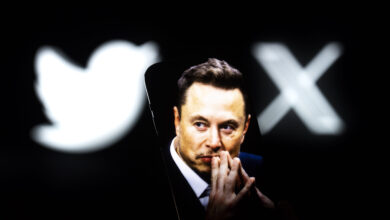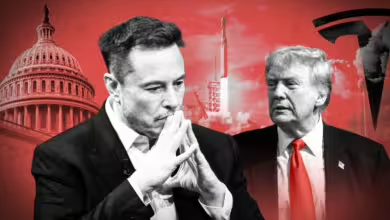How electric car startup Fisker plans to take on Tesla
Star car designer Henrik Fisker hopes the second time’s the charm for his second electric car startup, Fisker Inc.
The man who made his reputation designing sexy cars for BMW and Aston Martin stumbled a decade ago with his first EV effort, Fisker Automotive, which ended up in bankruptcy. So for his new venture, he’s following a different strategy for both creating the car and financing it.
Instead of making a luxury electric sports car that costs $100,000, as he did in 2012, Fisker will sell a more popular design—an SUV—that starts at under $40,000. Also, instead of building the entire vehicle from scratch in his own factory, he plans to partner with other automakers for many parts and much of the assembly.
And, as Fisker announced on Monday, instead of trying to raise billions of dollars in multiple rounds of private financing, he plans to take the company public quickly. “Having done this before, I just don’t feel it’s a good idea to try and raise so much capital in private rounds,” Fisker tells Fortune. “One round can be delayed, for whatever reason, and that means your product launch gets delayed, which then means you need to raise more money. I just don’t feel this works.”
The company aims to raise $1 billion of backing using a shortcut that another upstart electric-car maker, Nikola, used to go public last month. Forgoing the traditional method of hiring a Wall Street investment bank to sell new shares, Fisker is merging with an already public special-purpose acquisition corporation called Spartan Energy Acquisition, which is backed by private equity firm Apollo Global Management.
The move comes amid a strong market for shares of electric-vehicle makers. Although the share price of some slid a bit on Monday, the stocks of companies like Tesla, Arcimoto, and Workhorse have still recorded large gains for the year. Tesla’s stock is up 258% in 2020 while electric-van maker Workhorse’s is up more than fivefold. Meanwhile, Arcimoto, which makes three-wheeled electric vehicles, has gained 234% this year.
Once the Spartan Energy deal closes, which is expected in the fourth quarter, Fisker says he will have all the money he needs to bring his first car—the all-electric SUV called the Fisker Ocean—to market. The company showed off a prototype last year and hopes to start production next year. Only a few deliveries are expected to be completed by the end of 2021. Most likely, those will go to celebrity customers like Game of Thrones actor Nikolaj Coster-Waldau, an investor in the company who wrote an article praising the upcoming car for its environmentally friendly features.
The bulk of deliveries will start in 2022 and 2023, Fisker says. Additionally, he says, the company will have some aggressive financial targets to meet: becoming profitable and cash flow positive in 2023.
The boast seems almost impossible for a startup carmaker, but Fisker says it’s possible to achieve because he is partnering or outsourcing with major carmakers worldwide on various aspects of production to speed up development and reduce costs.
Fisker says the company is in “late-stage discussions” with several carmakers and parts suppliers, though he won’t name names. The upstart will partner with others on the so-called skateboard, the bottom layer of an electric vehicle that includes the battery, motors, and wheels. The startup is in discussion with Volkswagen for the skateboard, according to an investor presentation filed with the Securities and Exchange Commission, The Verge reported on Monday.
Other parts Fisker plans to outsource include the steering rack, air conditioning system, and even autonomous driving hardware and software. And the company will lean on existing manufacturing capacity owned by others to build the cars. “It’s dumb for any EV startup to build their own plant,” he says citing 20% overcapacity in the global car industry today.
“You’ve got to give up your ego,” Fisker explains. “You can’t have a vertically integrated company where you do everything yourself…A lot of the hardware in vehicles is going to end up being a commodity, and therefore we are willing to share those parts with somebody else.”
Fisker’s cars will rely on their design to stand out in the increasingly crowded electric car market, in which some critics say market leader Tesla’s minimalist vehicles are boring. “Emotional design is going to be in the foreground of vehicle purchasing in the future,” Fisker says. “We’re going to be the leader in that, both inside and outside [vehicles] and also the entire user interface on the screens in the interior and how you communicate.”
The Karma, Fisker’s original car in 2012, drew raves for its looks but got mixed reviews—at best—for reliability and performance. Fisker admits that some risks that his first company took didn’t pay off. A key battery supplier went bankrupt, for instance. “We have a lot of fans, and most of those cars are still on the road,” Fisker says. “Every car brand will go through certain ups and downs and some negative reviews, specifically if they take risks and are an innovator.”
A big part of the marketing push to come will rely on the new car’s sustainability, with some parts made from recycled materials. “The auto industry, we have a lot to do, and our aim is to make the world’s most sustainable vehicle,” Fisker says. “It’s one of our brand pillars. We want to contribute to a cleaner world.”
Source: Fortune




